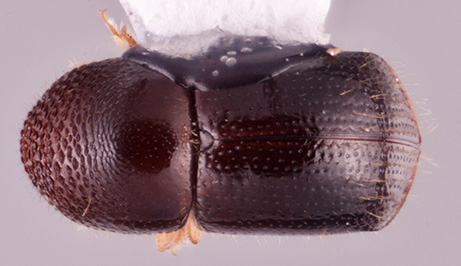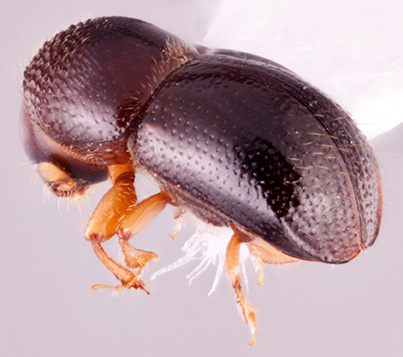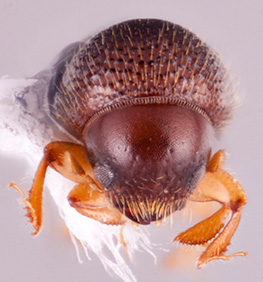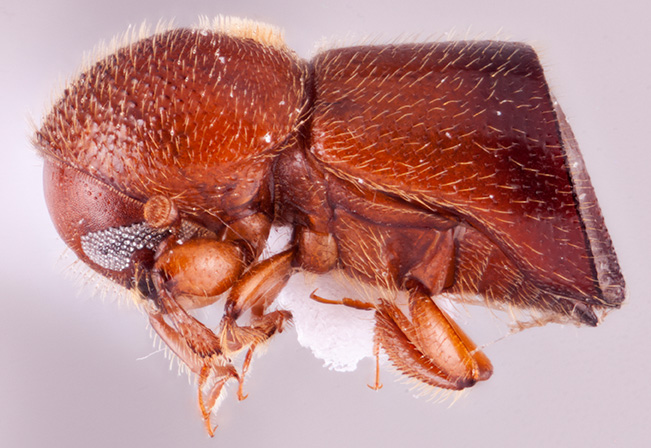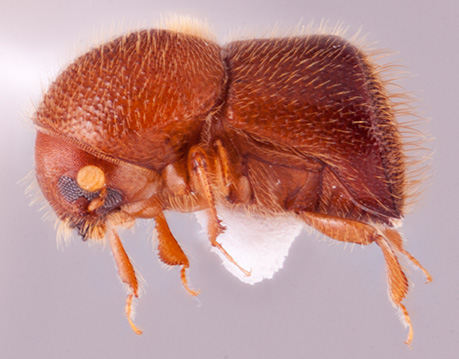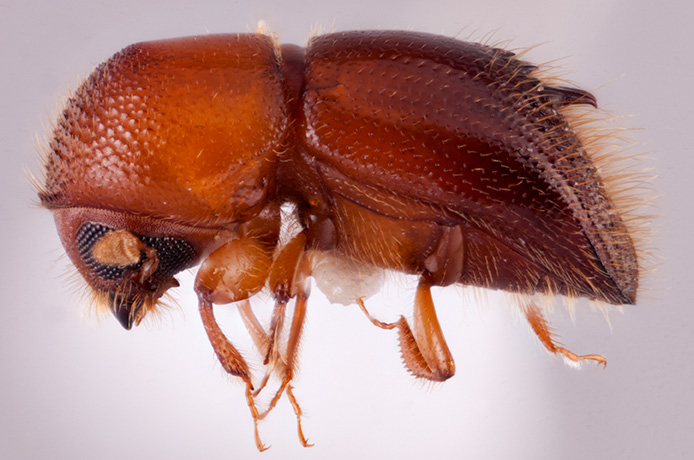Xylosandrus
|
Xylosandrus eupatorii; R.K. Osborn |
|
Xylosandrus eupatorii; R.K. Osborn |
|
Xylosandrus eupatorii; R.K. Osborn |
|
Xylosandrus eupatorii; R.K. Osborn |
|
Xylosandrus mancus; R.K. Osborn |
|
Xylosandrus borealis; R.K. Osborn |
|
Xylosandrus spinifer; R.K. Osborn |
|
Xylosandrus formosae; R.K. Osborn |
Taxonomy
Xylosandrus Reitter, 1913: 83.
Synonyms
Apoxyleborus Wood, 1980: 90. Wood, 1984: 229.
Diagnosis
Xylosandrus species are small to moderately sized, 1.3−3.9 mm long, and stout, 1.79−2.6 times as long as wide. Xylosandrus can be distinguished by the procoxae widely separated (narrowly separated in X. formosae); pronotumpronotum:
the dorsal surface of the thorax
with a median mycangial tuftmycangial tuft:
tuft of setae that denotes the mycangia exterior opening
 (absent in X. formosae); antennal antennal:
(absent in X. formosae); antennal antennal:
pertaining to the antennae
club type 1, obliquely truncateobliquely truncate:
nearly truncate but rounded not flat in lateral view
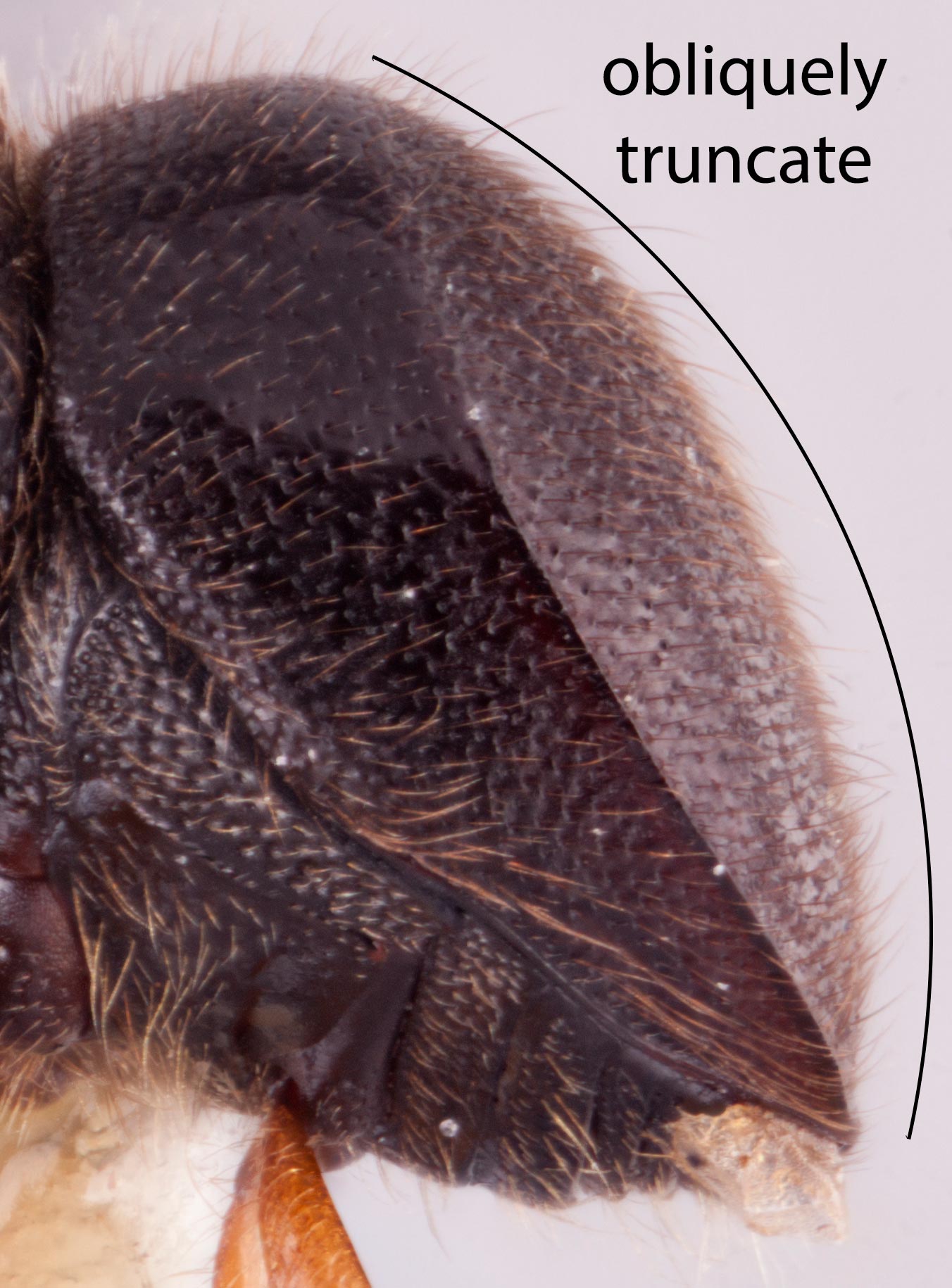 with segment one covering the posteriorposterior:
with segment one covering the posteriorposterior:
toward the rear end; opposite of anterior
 face; eyes moderately to deeply emarginateemarginate:
face; eyes moderately to deeply emarginateemarginate:
notched at the margin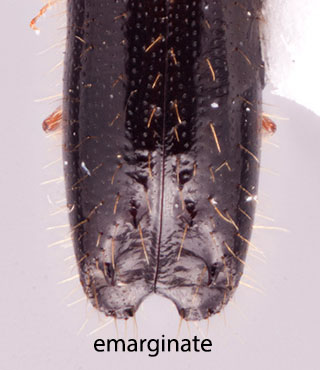 ; scutellumscutellum:
; scutellumscutellum:
a shield-like sclerotized plate located at the midpoint of the elytral base
visible, flat, flush with elytra; laterallateral:
pertaining to the side
 margin of the pronotumpronotum:
margin of the pronotumpronotum:
the dorsal surface of the thorax
obliquely costate; protibiaprotibia:
tibia of the first pair of legs
distinctly triangular or slender with fewer than 6 large socketed denticles; and elytralelytral:
pertaining to the elytra
declivitydeclivity:
downward slope of either the pronotum or elytra
 with 0, 5, or 6 striaestria:
with 0, 5, or 6 striaestria:
punctures in rows, which may or may not be impressed to make grooves .
.
May be confused with
Amasa, Anisandrus, Cnestus, Diuncus, and Hadrodemius. Xylosandrus is closely related to Anisandrus, Cnestus, and Hadrodemius, all of which possess a mesonotal mycangium and the associated dense tuft of hairs at the scutellar area and pronotalpronotal:
pertaining to the pronotum
basebase:
point or edge closest to the body; opposite of apex (Gohli et al. 2017Gohli et al. 2017:
(Gohli et al. 2017Gohli et al. 2017:
Gohli J, Kirkendall LR, Smith SM, Cognato AI, Hulcr J, Jordal BH. 2017. Biological factors contributing to bark and ambrosia beetle species diversification. Evolution 71: 1258-1272. https://doi.org/10.1111/evo.13219, Johnson et al. 2018Johnson et al. 2018:
Johnson AJ, McKenna DD, Jordal BH, Cognato AI, Smith SM, Lemmon AR, Moriarty Lemmon EL, Hulcr J. 2018. Phylogenomics clarifies repeated evolutionary origins of inbreeding and fungus farming in bark beetles (Curculionidae, Scolytinae). Molecular Phylogenetics and Evolution 127: 229-238. https://doi.org/10.1016/j.ympev.2018.05.028).
Distribution
globally distributed throughout temperate and tropical forests
Gallery system
The species typically breed in small diameter stems. The gallery system consists of a radial gallery leading to an irregular chamber in the centre of the stem with longitudinal branches extending up and down the stem.


